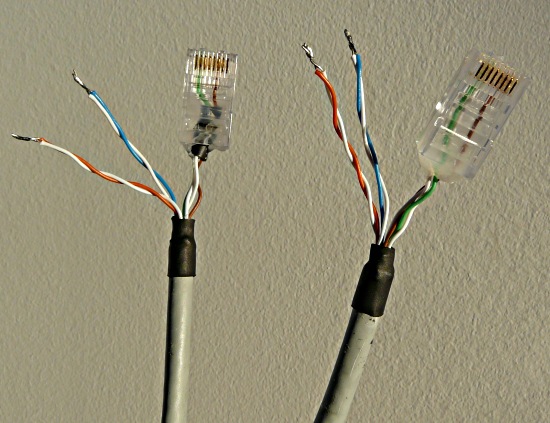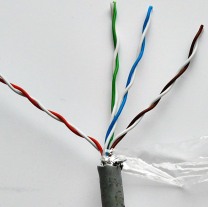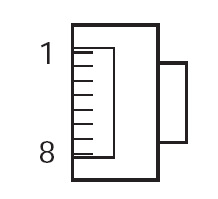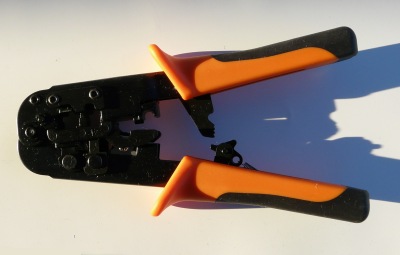http://tuxgraphics.org/electronics
|
Content: By Guido Socher |
A hobby power over ethernet solution (homebrew PoE)![[Illustration]](../../common/images2/article09033/homebrew_poe_th.jpg)
Abstract:
Every once in a while we get suggestions to build a PoE (Power over Ethernet) version of the tuxgraphics ethernet board. This is certainly a nice idea but
it seems that most people who want PoE want actually not IEEE 802.3af .
|

|

|

|
 To make your own ethernet cable as described above you will need a special
RJ45 crimp-tool. The contacts of the RJ45 are pressed directly into the wire.
The insulation of the wire is not taken off before you crimp. You cut
the wire at the right length and then you insert it into the the plastic rj45.
The contacts, when pressed-on with the crimp-tool, cut through the insulation
into the wire.
To make your own ethernet cable as described above you will need a special
RJ45 crimp-tool. The contacts of the RJ45 are pressed directly into the wire.
The insulation of the wire is not taken off before you crimp. You cut
the wire at the right length and then you insert it into the the plastic rj45.
The contacts, when pressed-on with the crimp-tool, cut through the insulation
into the wire.
2009-11-03, generated by tuxgrparser version 2.57